High-Speed Terahertz Modulation Signal Generation Based on Integrated LN-RMZM and CPPLN
Abstract
1. Introduction
2. Materials and Methods
2.1. Electro-Optic Modulation
2.2. CDFG of THz Signals
3. Results
4. Conclusions
Author Contributions
Funding
Institutional Review Board Statement
Informed Consent Statement
Data Availability Statement
Conflicts of Interest
References
- Jiang, Z.; Ding, G.; Luo, X.; Wang, S. Photoreconfigurable Metasurface for Independent Full-Space Control of Terahertz Waves. Sensors 2025, 25, 119. [Google Scholar] [CrossRef] [PubMed]
- Wang, C.; Lu, B.; Lin, C.; Chen, Q.; Miao, L.; Deng, X.; Zhang, J. 0.34-THz Wireless Link Based on High-Order Modulation for Future Wireless Local Area Network Applications. IEEE Trans. Terahertz Sci. Technol. 2014, 4, 75–85. [Google Scholar] [CrossRef]
- Tajima, T.; Song, H.-J.; Yaita, M. Compact THz LTCC Receiver Module for 300 GHz Wireless Communications. IEEE Microw. Wirel. Compon. Lett. 2016, 26, 291–293. [Google Scholar] [CrossRef]
- Teng, Y.L. 120 GHz On-chip Multi-mode Wideband Dielectric Resonator Antennas for THz Applications. Optoelectron. Lett. 2020, 16, 166–170. [Google Scholar] [CrossRef]
- Cheng, Y.Y.; Qiao, L.B.; Zhu, D.; Wang, Y.X.; Zhao, Z.R. Passive Polarimetric Imaging of Millimeter and Terahertz Waves for Personnel Security Screening. Opt. Lett. 2021, 46, 1233–1237. [Google Scholar] [CrossRef]
- Cassar, Q.; Caravera, S.; MacGrogan, G.; Bücher, T.; Hillger, P.; Pfeiffer, U.; Zimmer, T.; Guillet, J.-P.; Mounaix, P. Terahertz Refractive Index-Based Morphological Dilation for Breast Carcinoma Delineation. Sci. Rep. 2021, 11, 6457. [Google Scholar] [CrossRef]
- Ma, Z.T.; Geng, Z.X.; Fan, Z.Y.; Liu, J.; Chen, H.D. Modulators for Terahertz Communication: The Current State of the Art. Research 2019, 2019, 6482975. [Google Scholar] [CrossRef]
- Niessen, K.A.; Xu, M.; Markelz, A.G. Terahertz Optical Measurements of Correlated Motions with Possible Allosteric Function. Biophys. Rev. 2015, 7, 201–216. [Google Scholar] [CrossRef]
- Cheng, B.B.; Cui, Z.M.; Lu, B.; Qin, Y.L.; Liu, Q.; Chen, P.; He, Y.; Jiang, J.; He, X.Y.; Deng, X.J.; et al. 340-GHz 3-D Imaging Radar with 4Tx-16Rx MIMO Array. IEEE Trans. Terahertz Sci. Technol. 2018, 8, 509–519. [Google Scholar] [CrossRef]
- Kim, Y.; Zhang, Y.; Reck, T.J.; Nemchick, D.J.; Chattopadhyay, G.; Drouin, B.; Chang, M.C.F.; Tang, A. A 183-GHz InP/CMOS-Hybrid Heterodyne-Spectrometer for Spaceborne Atmospheric Remote Sensing. IEEE Trans. Terahertz Sci. Technol. 2019, 9, 313–334. [Google Scholar] [CrossRef]
- Ding, J.Q.; Shi, S.C.; Zhou, K.; Zhao, Y.; Liu, D.; Wu, W. WR-3 Band Quasi-Elliptical Waveguide Filters Using Higher Order Mode Resonances. IEEE Trans. Terahertz Sci. Technol. 2017, 7, 302–309. [Google Scholar] [CrossRef]
- Guo, C.; Shang, X.B.; Lancaster, M.J.; Xu, J.; Powell, J.; Wang, H.; Parow-Souchon, K.; Henry, M.; Viegas, C.; Alderman, B.; et al. A 290–310 GHz Single Sideband Mixer with Integrated Waveguide Filters. IEEE Trans. Terahertz Sci. Technol. 2018, 8, 446–454. [Google Scholar] [CrossRef]
- Li, Y.L.; Gao, W.; Guo, L.; Chen, Z.H.; Li, C.J.; Zhang, H.M.; Jiao, J.J.; An, B.W. Tunable Ultra-broadband Terahertz Perfect Absorber Based on Vanadium Oxide Metamaterial. Opt. Express 2021, 29, 41222–41233. [Google Scholar] [CrossRef]
- Yu, B.; Yang, J.; Song, Y.; Wang, Z.; Zhang, T.; Yan, B.; Xu, R. Terahertz Metamaterial Waveguide with I-Shaped Resonators for Phase and Absorption Modulation. Photonics 2023, 10, 816. [Google Scholar] [CrossRef]
- Xu, Z.; Ni, C.; Cheng, Y.; Dong, L.; Wu, L. Photo-Excited Metasurface for Tunable Terahertz Reflective Circular Polarization Conversion and Anomalous Beam Deflection at Two Frequencies Independently. Nanomaterials 2023, 13, 1846. [Google Scholar] [CrossRef]
- Iqbal, R.; Qureshi, U.U.R.; Jie, C.; Rahman, Z.U.; Jafar, N. Polarization and Incident Angle Independent Multifunctional and Multiband Tunable THz Metasurface Based on VO2. Nanomaterials 2024, 14, 1048. [Google Scholar] [CrossRef]
- Zhao, C.; Wang, D.; Lin, S.; Zhao, J.; Wang, Y.; Rong, L. Design Optimization of Silicon-Based Optically Excited Terahertz Wave Modulation. Photonics 2024, 11, 202. [Google Scholar] [CrossRef]
- Singh, P.; Sonkusale, S. High Speed Terahertz Modulator on the Chip Based on Tunable Terahertz Slot Waveguide. Sci. Rep. 2017, 7, 40933. [Google Scholar] [CrossRef] [PubMed]
- Zhang, R.; Cao, Y.; Li, X.; Yang, X.; Li, S.; Lang, L. On-Chip Terahertz Amplitude Modulator Unit in Series Configuration Design. Opt. Commun. 2025, 579, 131546. [Google Scholar] [CrossRef]
- Delfanazari, K. On-Chip Coherent Terahertz Emitters with Gigahertz Modulation. Nat. Photonics. 2024, 18, 214–215. [Google Scholar] [CrossRef]
- Ding, K.; Liang, S.; Zou, L.; Gong, S.; Zhang, Y. Terahertz High-Speed On-Chip Modulator Based on SRR. In Proceedings of the 24th International Vacuum Electronics Conference (IVEC), Chengdu, China, 25–28 April 2023. [Google Scholar] [CrossRef]
- Yu, X.; Gan, R.F.; Chen, K.X.; Chen, G.X.; Ruan, Z.L.; Zhang, J.W.; Liu, J.; Dai, D.X.; Guo, C.J.; Liu, L. Breaking the Bandwidth Limit of a High-Quality-Factor Ring Modulator Based on Thin-Film Lithium Niobate. Optica 2022, 9, 1131–1137. [Google Scholar] [CrossRef]
- Wang, C.; Zhang, M.; Chen, X.; Bertrand, M.; Shams-Ansari, A.; Chandrasekhar, S.; Winzer, P.; Lončar, M. Integrated Lithium Niobate Electro-Optic Modulators Operating at CMOS-Compatible Voltages. Nature 2018, 562, 101–104. [Google Scholar] [CrossRef] [PubMed]
- Chen, G.X.; Chen, K.X.; Gan, R.F.; Ruan, Z.L.; Wang, Z.; Huang, P.C.; Lu, C.; Lau, A.P.T.; Dai, D.X.; Guo, C.J.; et al. High Performance Thin-Film Lithium Niobate Modulator on a Silicon Substrate Using Periodic Capacitively Loaded Traveling-Wave Electrode. APL Photonics 2022, 7, 2. [Google Scholar] [CrossRef]
- Ma, X.F.; Wang, N.Y.; Cao, R.Z.; Sheng, C.; Zhu, S.; Liu, H. Optical to Terahertz Frequency Conversion Using Near Zero-Index Nonlinear Hybrid Waveguides. Opt. Contin. 2024, 3, 682–690. [Google Scholar] [CrossRef]
- Li, Z.; Sun, X.Q.; Zhang, H.T.; Li, Y.J.; Yuan, B.; Jiao, B.Z.; Zhao, J.; Tan, L.; Bing, P.; Wang, Z.; et al. High-Efficiency Terahertz Wave Generation in Aperiodically Poled Lithium Niobate by Cascaded Difference Frequency Generation. J. Opt. Soc. Am. B 2020, 37, 2416–2422. [Google Scholar] [CrossRef]
- Li, Z.; Yan, Q.; Chen, X.; Bing, P.; Yuan, S.; Zhong, K.; Yao, J. Investigation of Efficient Terahertz Wave Generation by Coupled Cascade Difference Frequency Generation. Chin. J. Lasers 2023, 50, 0614001. [Google Scholar] [CrossRef]
- Kato, K.; Takaoka, E. Sellmeier and Thermo-Optic Dispersion Formulas for KTP. Appl. Opt. 2002, 41, 5040–5044. [Google Scholar] [CrossRef]
- Zelmon, D.E.; Small, D.L.; Jundt, D. Infrared Corrected Sellmeier Coefficients for Congruently Grown Lithium Niobate and 5 mol.% Magnesium Oxide–Doped Lithium Niobate. J. Opt. Soc. Am. B 1997, 14, 3319–3322. [Google Scholar] [CrossRef]
- Kiessling, J.; Buse, K.; Breunig, I. Temperature-Dependent Sellmeier Equation in the MIR for the Extraordinary Refractive Index of 5% MgO Doped Congruent LiNbO3. Appl. Phys. B 2007, 86, 111–115. [Google Scholar] [CrossRef]
- Ravi, K.; Schimpf, D.N.; Kärtner, F.X. Pulse Sequences for Efficient Multi-Cycle Terahertz Generation in Periodically Poled Lithium Niobate. Opt. Express 2016, 24, 25582–25607. [Google Scholar] [CrossRef]
- Liu, P.; Xu, D.; Yu, H.; Zhang, H.; Li, Z.; Zhong, K.; Wang, Y.; Yao, J. Coupled-Mode Theory for Cherenkov-Type Guided-Wave Terahertz Generation via Cascaded Difference Frequency Generation. J. Light. Technol. 2013, 31, 2508–2514. [Google Scholar] [CrossRef]
- Pálfalvi, L.; Hebling, J.; Kuhl, J.; Péter, Á.; Polgár, K. Temperature Dependence of the Absorption and Refraction of Mg-doped Congruent and Stoichiometric LiNbO3 in the THz Range. J. Appl. Phys. 2005, 97, 123505. [Google Scholar] [CrossRef]
- Ravi, K.; Hemmer, M.; Cirmi, G.; Reichert, F.; Schimpf, D.; Mücke, O.; Kärtner, F. Cascaded parametric amplification for highly efficient terahertz generation. Opt. Lett. 2016, 41, 3806–3809. [Google Scholar] [CrossRef] [PubMed]
- Wang, T.J.; Peng, G.L.; Chan, M.Y.; Chen, C.H. On-Chip Optical Microresonators with High Electro-Optic Tuning Efficiency. J. Light. Technol. 2020, 38, 1851–1857. [Google Scholar] [CrossRef]
- Zhang, Y.; Ding, K.; Zeng, H.; Kou, W.; Zhou, T.; Zhou, H.; Gong, S.; Zhang, T.; Wang, L.; Liang, S.; et al. Ultrafast modulation of terahertz waves using on-chip dual-layer near-field coupling. Opt. Lett. 2022, 9, 1268–1275. [Google Scholar] [CrossRef]
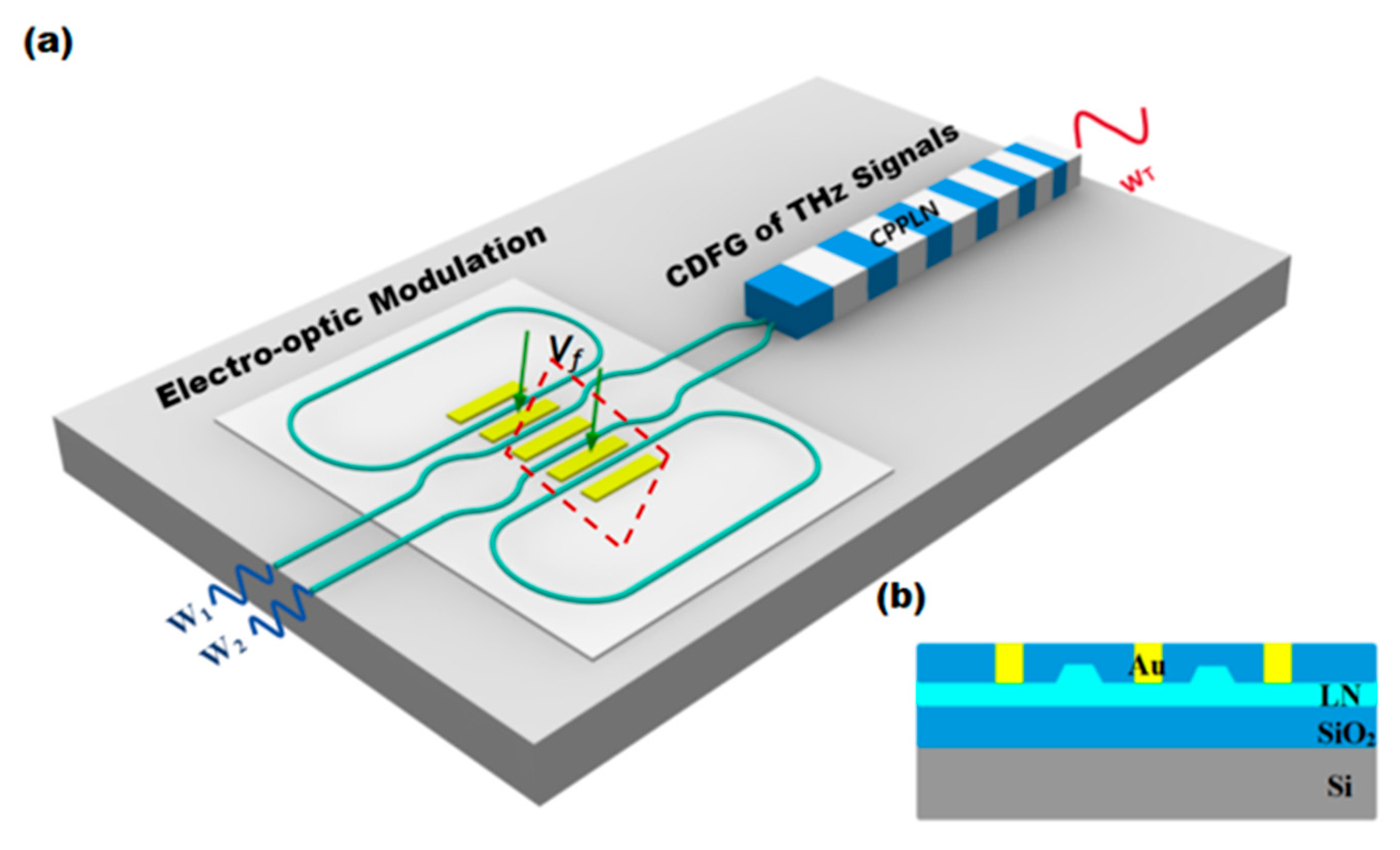
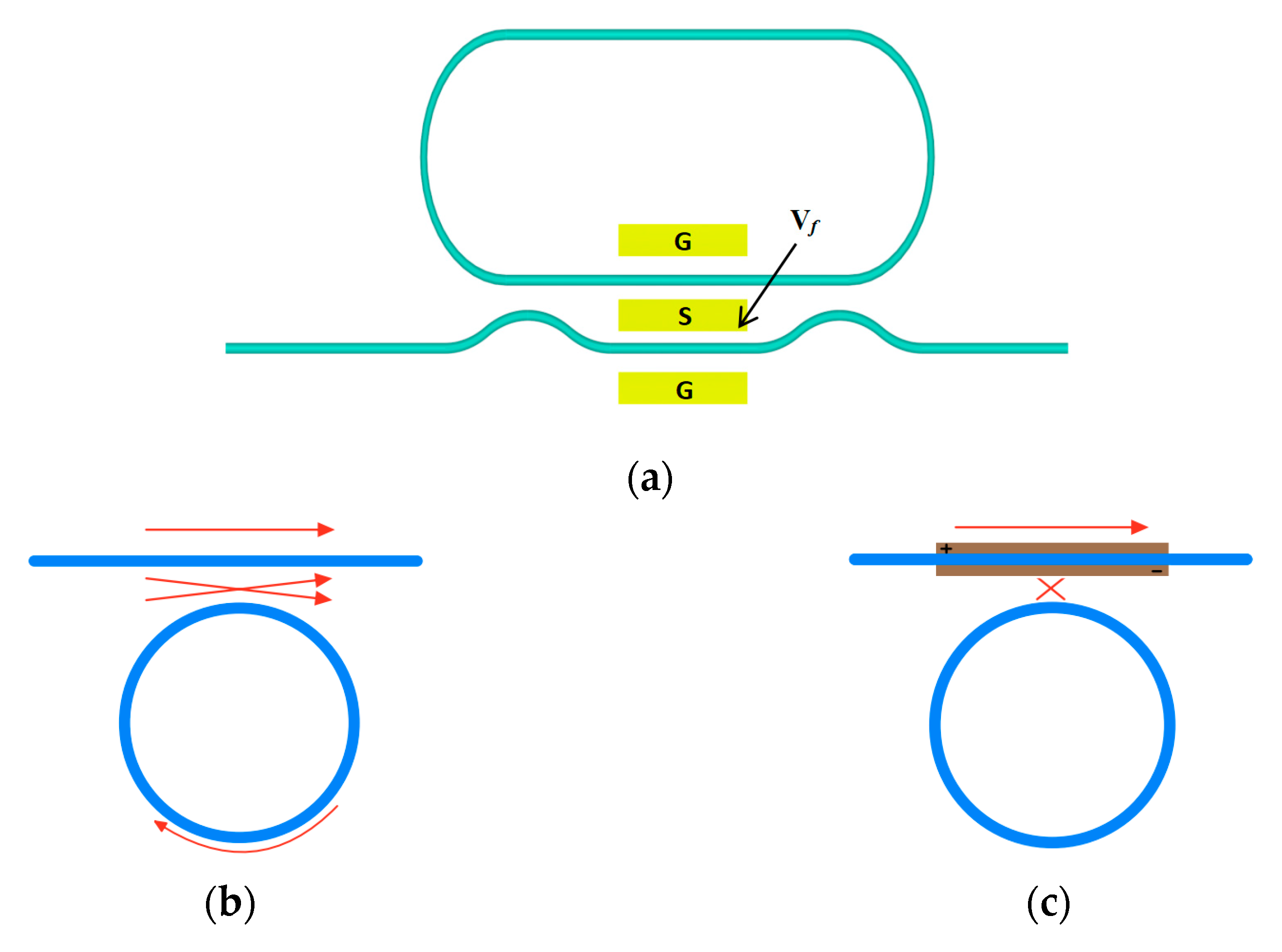
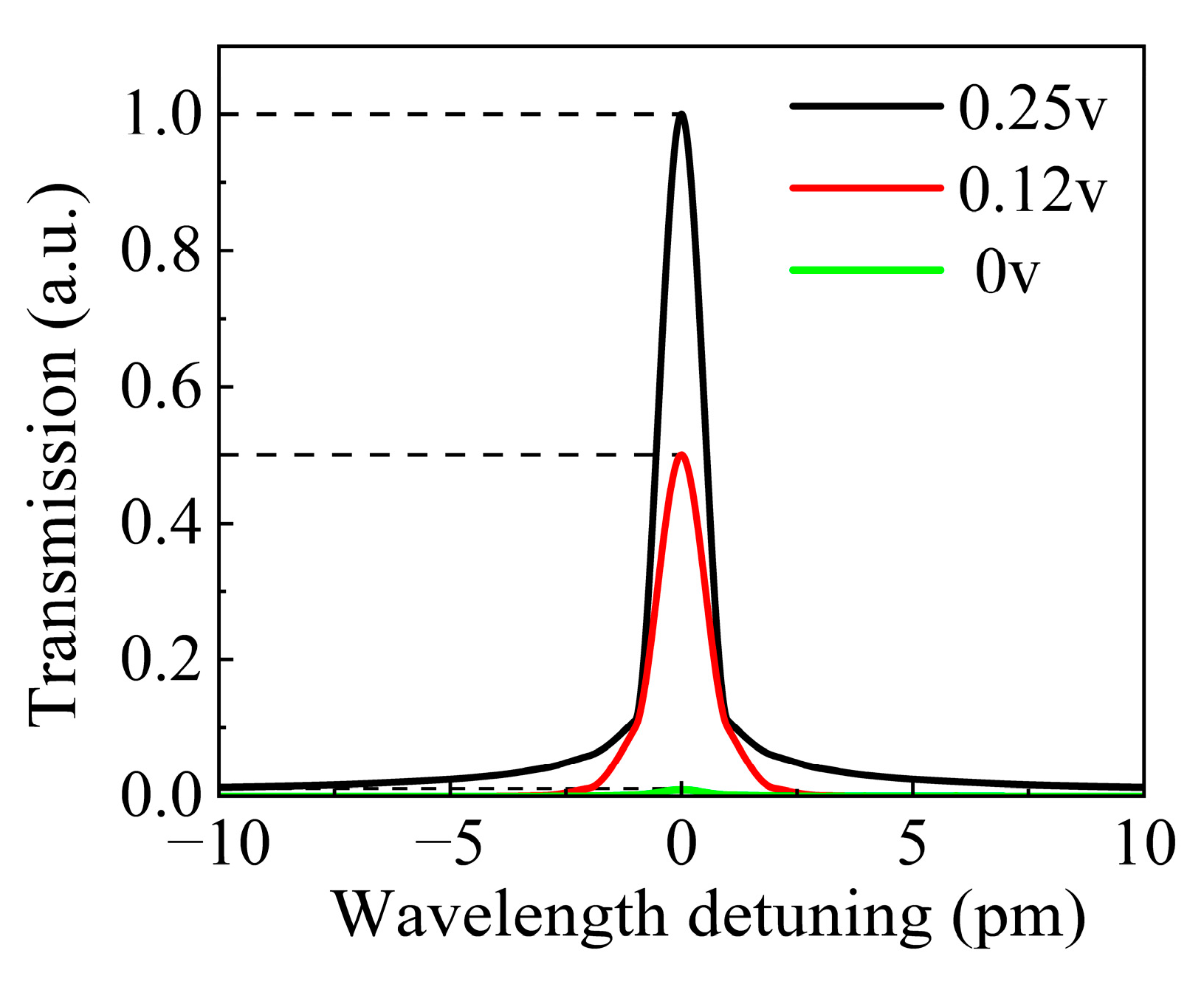
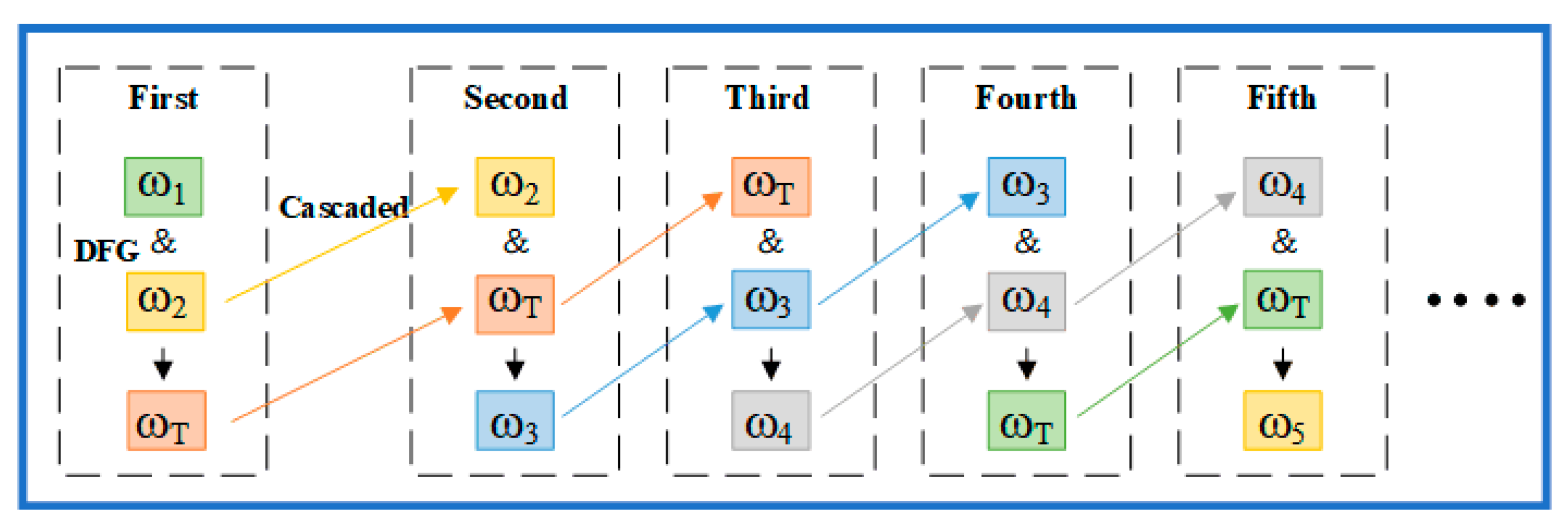
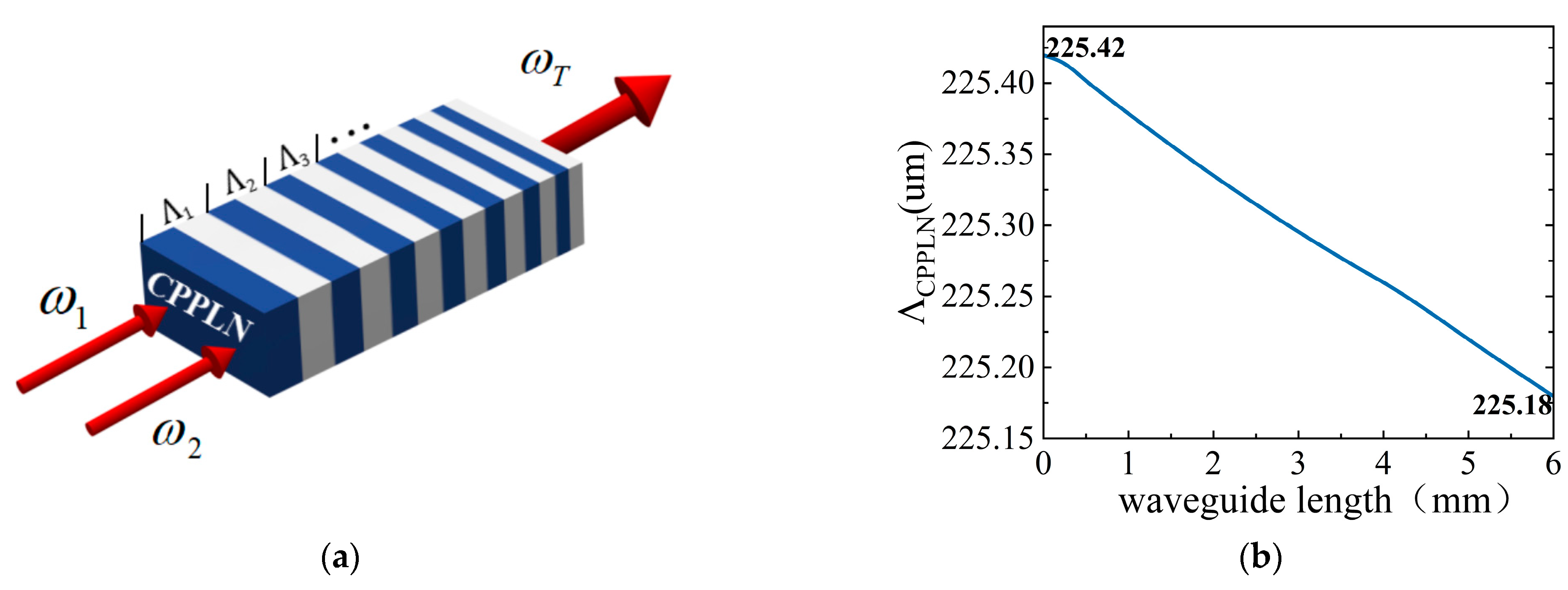
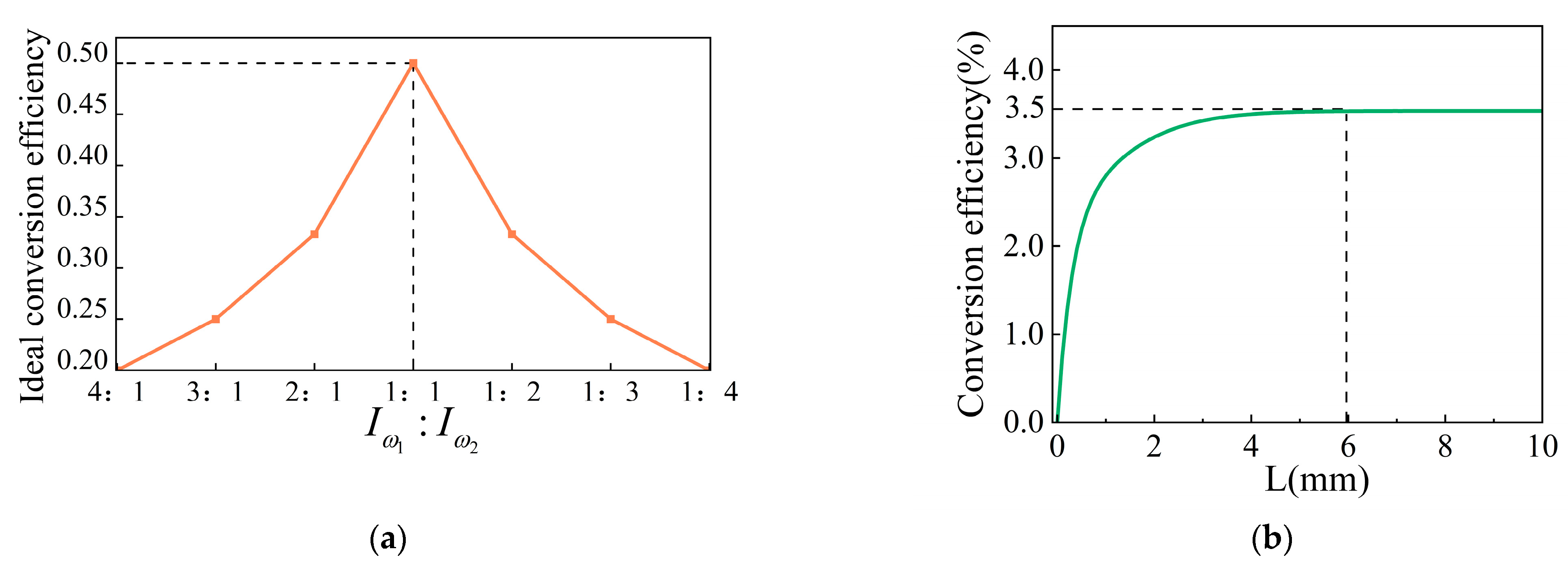

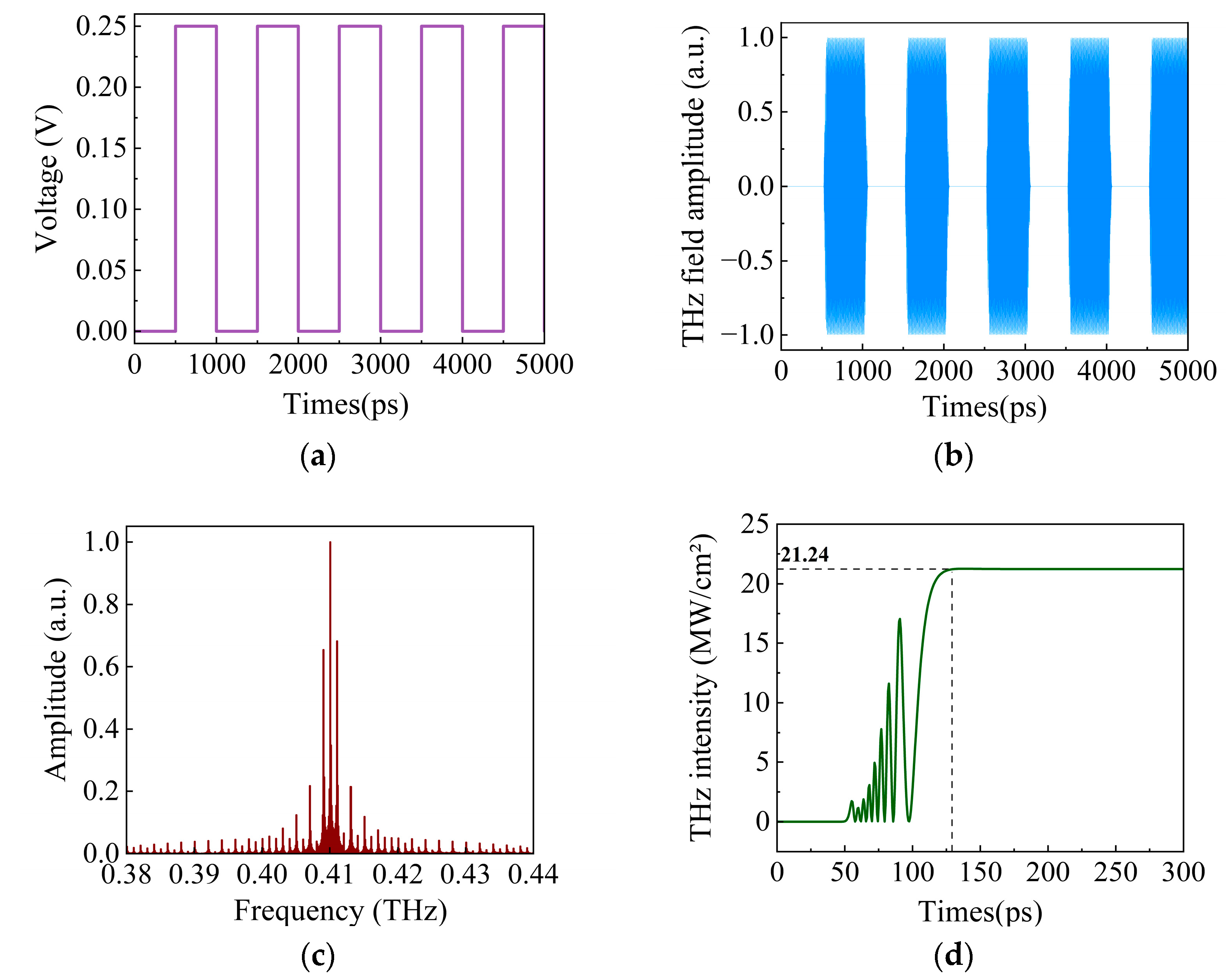
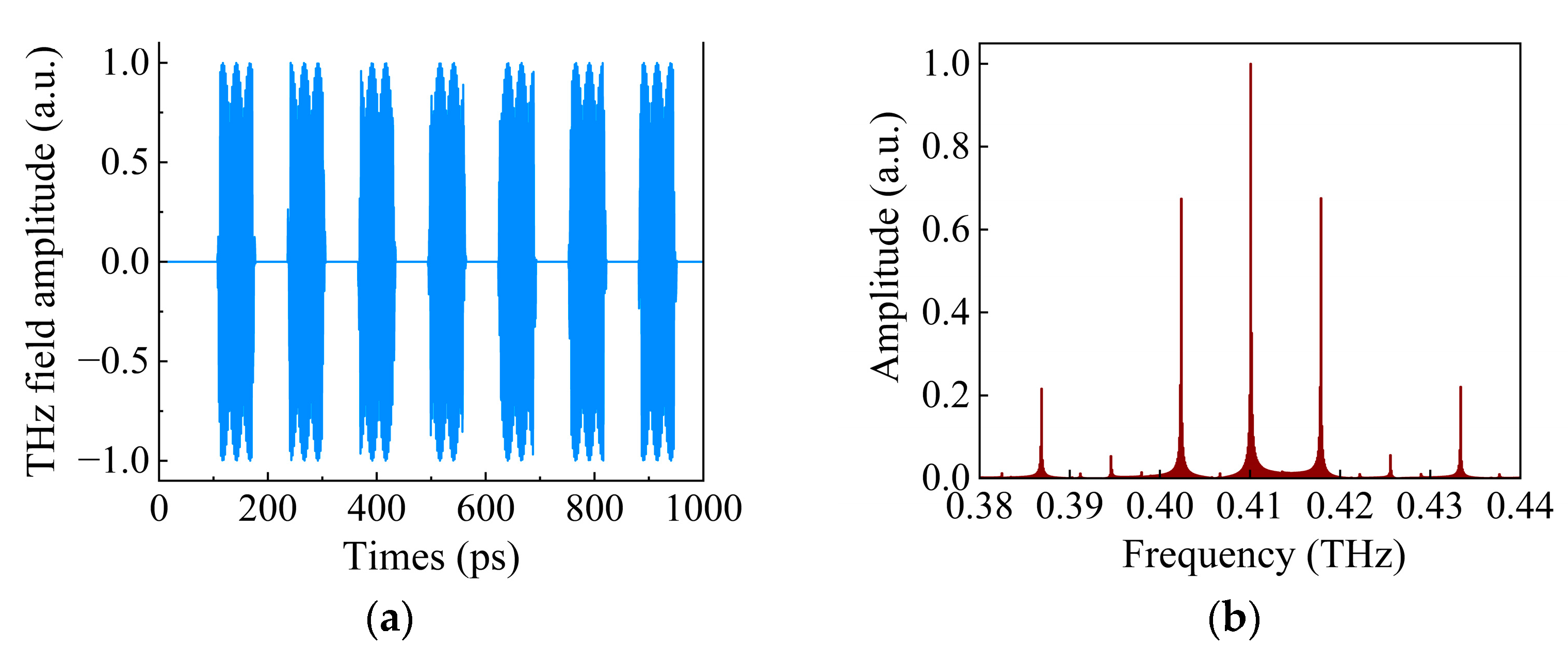
Disclaimer/Publisher’s Note: The statements, opinions and data contained in all publications are solely those of the individual author(s) and contributor(s) and not of MDPI and/or the editor(s). MDPI and/or the editor(s) disclaim responsibility for any injury to people or property resulting from any ideas, methods, instructions or products referred to in the content. |
© 2025 by the authors. Licensee MDPI, Basel, Switzerland. This article is an open access article distributed under the terms and conditions of the Creative Commons Attribution (CC BY) license (https://creativecommons.org/licenses/by/4.0/).
Share and Cite
Zhou, H.; Ma, M.; Zhang, C.; Zhao, X.; Ma, W.; Li, W.; Xia, M. High-Speed Terahertz Modulation Signal Generation Based on Integrated LN-RMZM and CPPLN. Photonics 2025, 12, 490. https://doi.org/10.3390/photonics12050490
Zhou H, Ma M, Zhang C, Zhao X, Ma W, Li W, Xia M. High-Speed Terahertz Modulation Signal Generation Based on Integrated LN-RMZM and CPPLN. Photonics. 2025; 12(5):490. https://doi.org/10.3390/photonics12050490
Chicago/Turabian StyleZhou, Hangfeng, Miao Ma, Chenwei Zhang, Xinlong Zhao, Weichao Ma, Wangzhe Li, and Mingjun Xia. 2025. "High-Speed Terahertz Modulation Signal Generation Based on Integrated LN-RMZM and CPPLN" Photonics 12, no. 5: 490. https://doi.org/10.3390/photonics12050490
APA StyleZhou, H., Ma, M., Zhang, C., Zhao, X., Ma, W., Li, W., & Xia, M. (2025). High-Speed Terahertz Modulation Signal Generation Based on Integrated LN-RMZM and CPPLN. Photonics, 12(5), 490. https://doi.org/10.3390/photonics12050490




